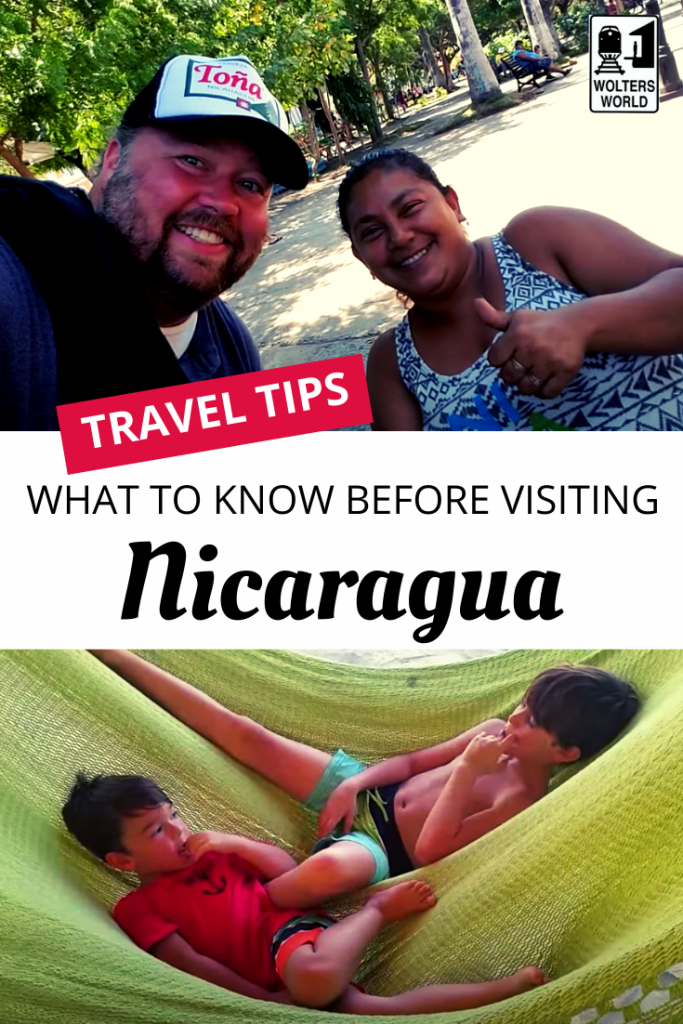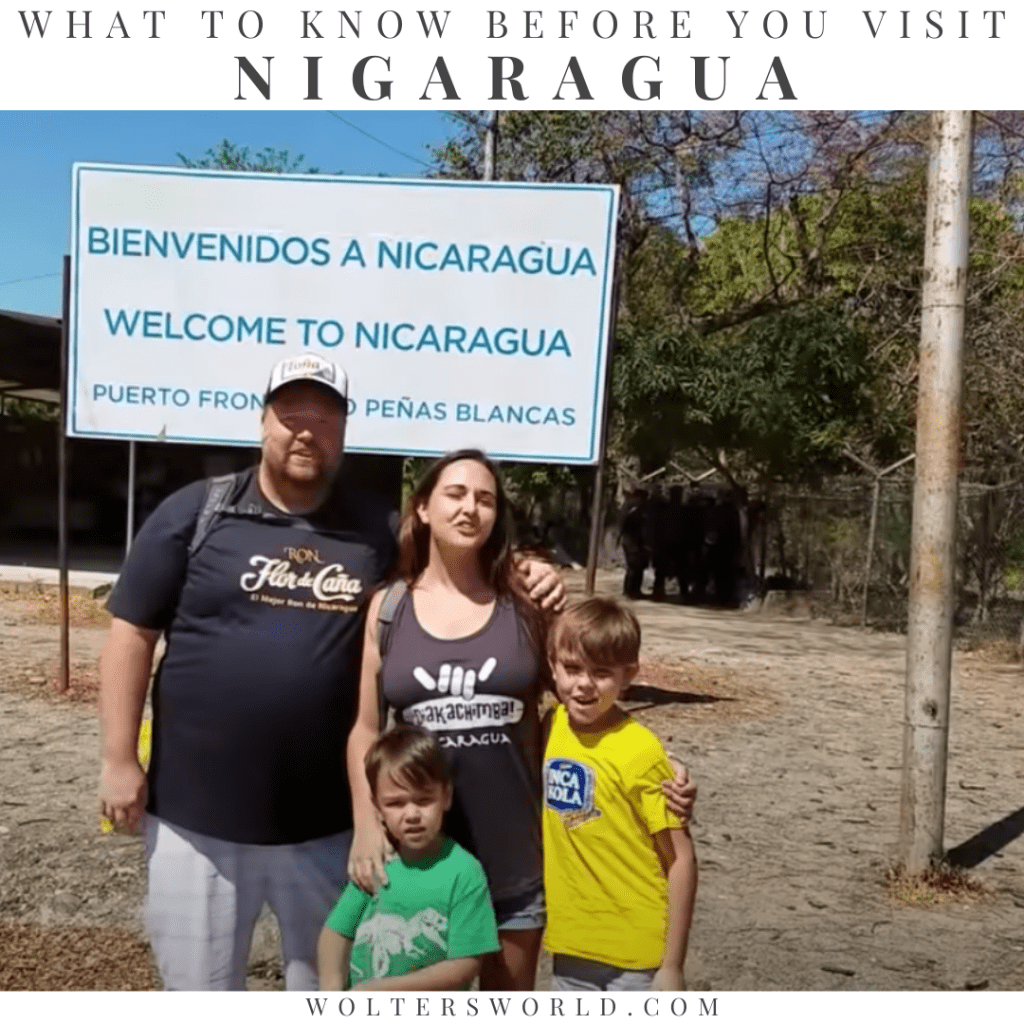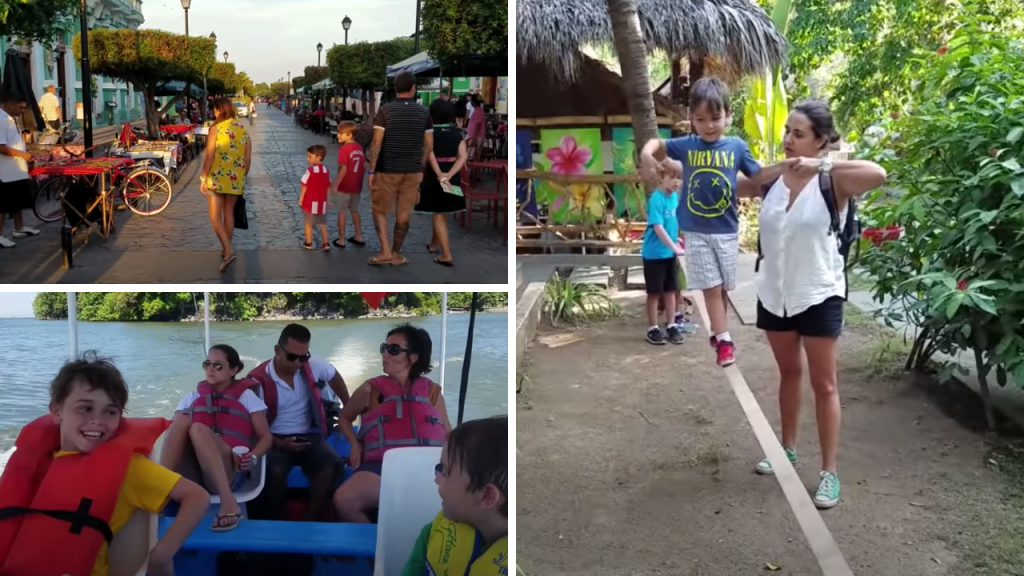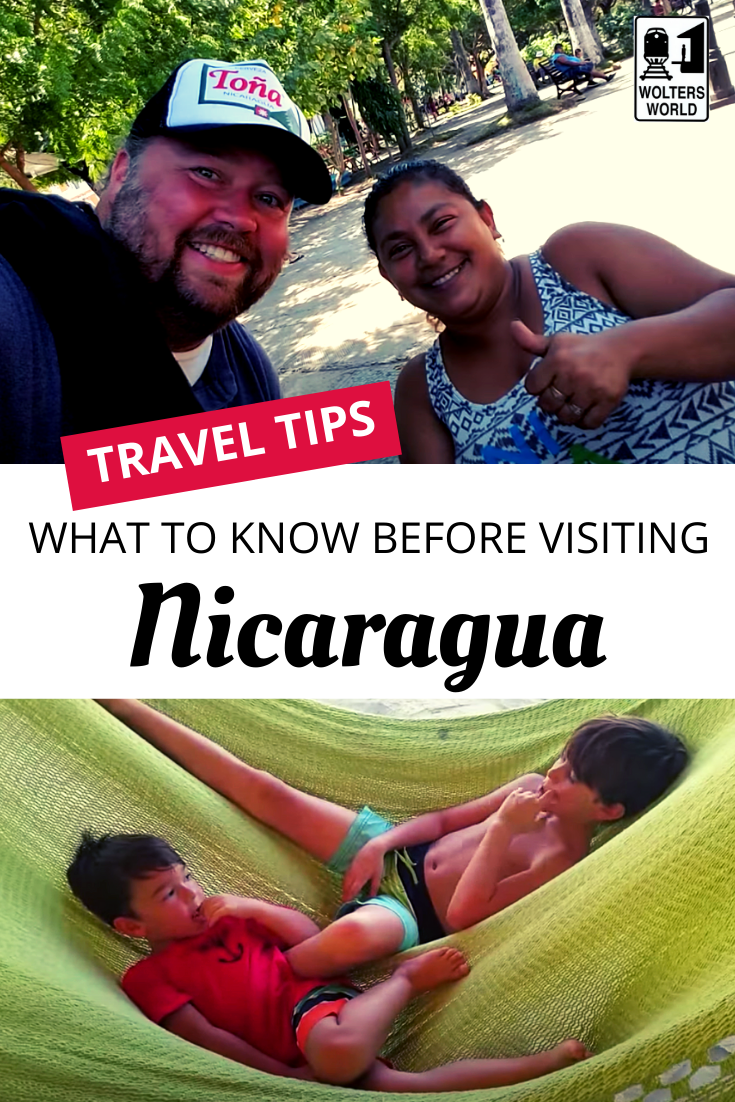Hey there, fellow travelers! Today, we’re traveling to the Central American country of Nicaragua. A lot of people do not have the most positive perspective on Nicaragua, but it’s really a cool place. The Iran-Contra affair was over 30 years ago, so it’s time to gain a new perspective on Nicaragua as a travel destination. There are a ton of cool places to visit in Nicaragua, so let’s share our tips so you can start planning your own Nicaragua vacation.
Places to Visit in Nicaragua
There are many cool places to visit in Nicaragua. Aside from the Corn Islands to the east, we recommend sticking to the western and southern parts of Nicaragua. The capital city, Managua, was destroyed in an earthquake in the 70s and has not really been rebuilt to be of much interest.
- Lake Nicaragua is a huge lake in the southern part of the country. There are volcanoes in the lake, as well as an island you can visit.
- San Juan del Sur has some of the best Nicaragua beaches for surfing. It’s the Nicaragua surf capital!
- For a more urban experience, Granada is one of the most popular destinations in Nicaragua. It’s a beautiful colonial city, with volcanoes nearby.
- Near Granada, you have Las Isletas de Granada, a group of 365 islands full of wildlife and adventure opportunities.
Grab Some Wolters World Travel Gear!
Learn a Bit of Spanish
Tourism is relatively new in Nicaragua, so it helps if you can speak some Spanish. You won’t find as many English speakers as Costa Rica and Belize, so knowing a little bit of Spanish will be helpful. Even if it’s just “hello, please, thank you, goodbye” the locals will be so appreciative of your attempt to communicate with them.

Prices in Nicaragua
Nicaragua is a very affordable destination. You can expect to pay between $25 to $30 per night for decent accommodation. Of course, you can spend more or less depending on your budget.
Eating out in Nicaragua is super cheap. We ate breakfast at the market for $2 apiece. At a restaurant, you might spend $4 or $5, which is still a great deal.
Transportation in Nicaragua is also super affordable, so all around this is a cheap vacation once you arrive.
Nicaragua Currency
The local currency in Nicaragua is Cordobas, but you can also pay in US dollars if you need to. Cash is still mostly preferred, so it’s good to have some on hand. Make sure you have smaller bills since the prices are so low. Some places in the larger cities will accept credit cards, but it’s safe to just have cash just in case. Finding an ATM can be challenging, so make sure you bring some cash from home!
Is Nicaragua Safe?
Obviously, you want to keep your usual travel sense about you, especially in the larger cities. However, we found Nicaragua to be very safe and comfortable. Use the hotel safe, split your cash into different spots, and don’t flash expensive jewelry or electronics. These travel safety tips apply to any destination, not just Nicaragua.
If you take buses around the country, keep an eye on your belongings. This also applies to the beach; make sure one person in your party can stay with your belongings while you are out surfing or swimming.
The biggest danger in Nicaragua might be the sun and the heat. I used 70 SPF on my face and still got a sunburn. The sun is incredibly strong in Nicaragua. Make sure you have sunscreen and bug spray because the mosquitos can be annoying.
Tipping in Nicaragua
Plan to tip around 10% when you eat out in Nicaragua. Since prices are so low, it’s easy to be generous with the tipping, and it will be much appreciated. We leave a few bucks a day for the cleaning staff at the hotel as well. 10% is also the general guideline for any drivers or tour guides that you would want to tip.

Shopping in Nicaragua
Don’t expect to find a lot of souvenir shops in Nicaragua. Since tourism hasn’t really taken off yet, the souvenir industry hasn’t moved in quite yet. You’ll find the usual t-shirts and cigars, but don’t plan on a lot of shopping during your trip. The shops they do have tend to close early, so make sure you do your shopping early in the day, rather than waiting until evening. A lot of places are closed on Sunday, so plan ahead!
Getting Around Nicaragua
There are a few ways to travel around Nicaragua. The most popular is probably the “chicken bus.” These are old school buses that now serve as public transportation. You’re just as likely to have a chicken or a goat sitting next to you as you would another passenger. The buses transport cargo, livestock, and people! This is the cheapest way to get around Nicaragua. You’re looking at less than a dollar for an hour-long ride. If you plan to get around using these buses, make sure you pack lightly!
If you want to splurge a bit, you can also opt for an express bus, which has fewer stops and is usually more comfortable. It’s also pretty cheap to hire a private driver through your hotel.
Time is usually the determining factor in which method of transportation you choose. Chicken buses take the longest, but you can flag them down almost anywhere, and it’s by far the cheapest option.
Taxis in Nicaragua are shared, meaning someone else might hop in with you. You don’t pay for the whole taxi; you pay for your seat in the taxi. If you want the whole taxi to yourself, just let the driver know you want to pay for the whole car.
Staying Connected in Nicaragua
With AT&T cellular service, we had mobile and 4G service in many places around Nicaragua. There are also internet cafes around if you need to hop online. If you prefer, you can buy a new SIM card for Nicaragua. It’s easy to buy one at the border crossings or at the airport.

Water in Nicaragua
Do not drink the tap water in Nicaragua. Hotels will have big jugs of filtered water for you to drink and also to use to brush your teeth. The same goes for ice or raw fruit and vegetables; use caution and your best judgment. It’s always better to be safe than sorry. We did not have any issues, but we were cautious.
Everything You Need to Know About Traveler’s Diarrhea
Toilets in Nicaragua
Remember, you don’t flush anything down the toilet, including toilet paper. There will be a basket next to the toilet where you can throw your TP and anything else. The plumbing is too old to handle paper, and this is pretty common in Latin American countries.
Electricity in Nicaragua
Electrical outlets in Nicaragua are the same as in the United States so if you’re coming from the US, you won’t need any converters or adapters.
Food in Nicaragua
Like many Central American countries, beans and rice are a staple in Nicaragua. It’s served at pretty much every meal. Expect rice and beans and eggs for breakfast, and rice & beans with chicken or beef for lunch and dinner. There’s a ton of fresh fruit and fresh fruit juices. The street food in Nicaragua is really good. We loved quesillos and nacatamales the most!
Tona and Victoria are the two local beers I recommend trying while you are in Nicaragua. Tona is really smooth, while Victoria is just slightly bitter. Rum is also a local specialty, so try the Flor de Cana rum in Nicaragua.
Nicaragua is a great budget-friendly alternative to nearby Costa Rica, which has higher prices as it’s a more popular destination. We felt very safe there, and would highly recommend Nicaragua as a family adventure destination! Want more tips on travel in Central America? Check out these other blog posts!
